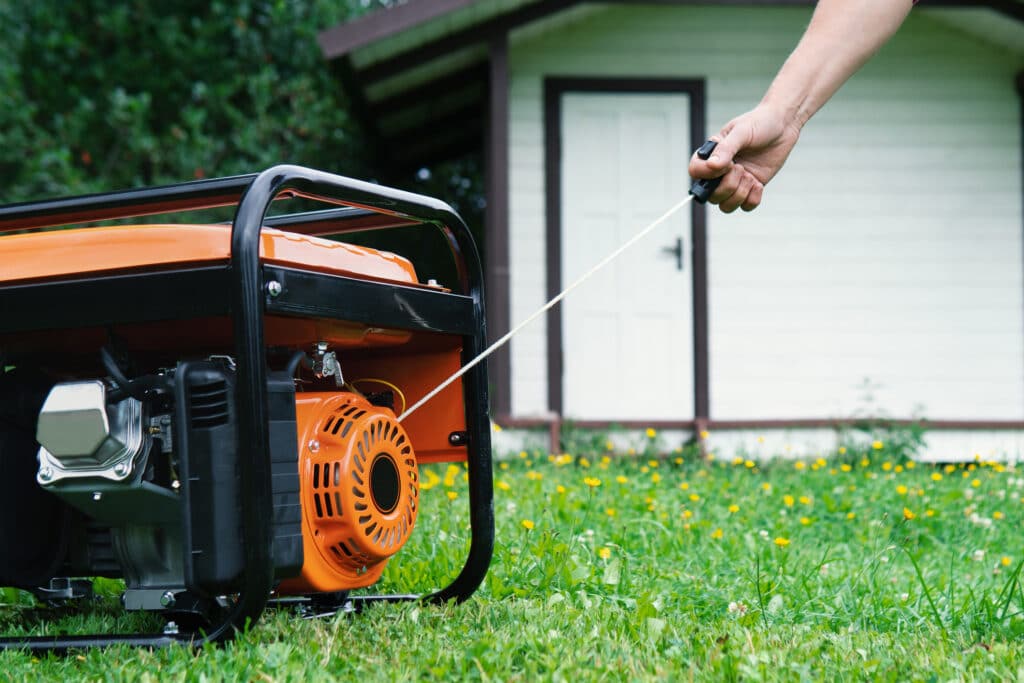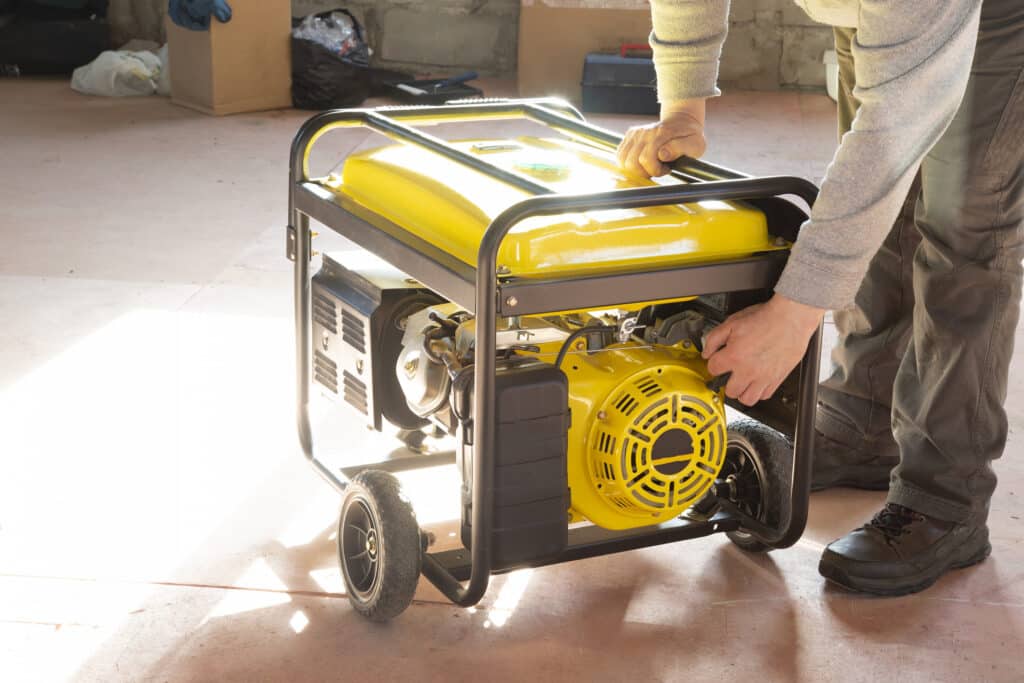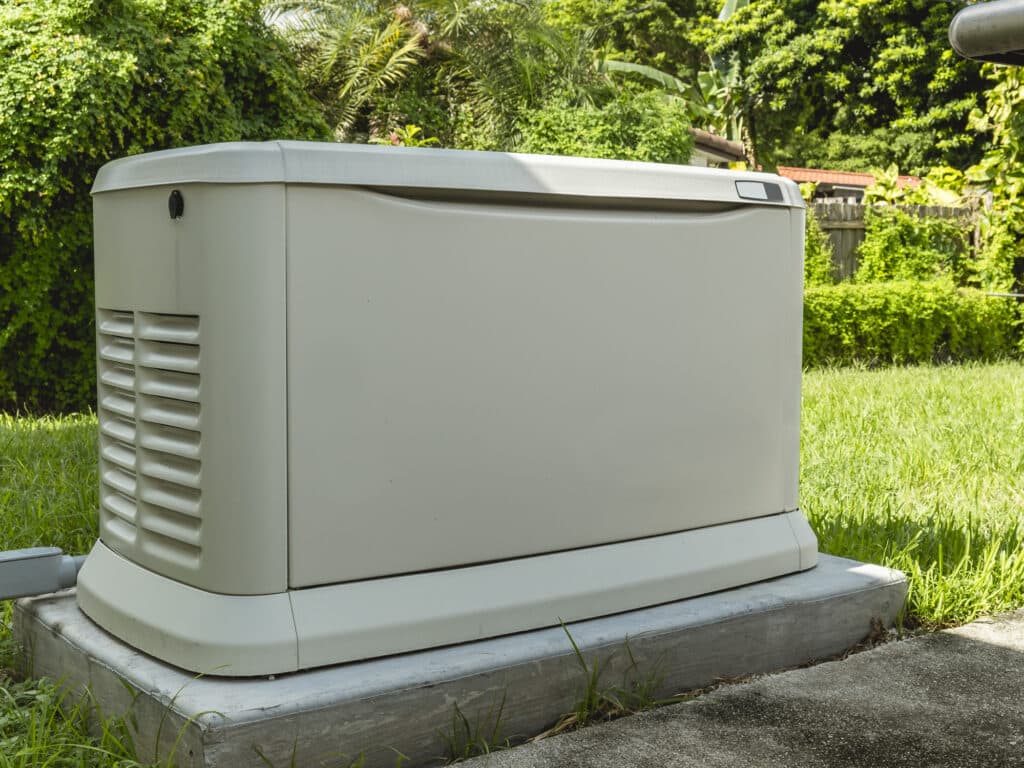Summer is just kicking off, and the National Oceanic and Atmospheric Administration (NOAA) released their predictions for hurricane season. With above-average temperatures and more hurricane activity expected in the Atlantic, now is the time to prepare.
If you live in a hurricane-prone region and you’re considering investing in a backup generator, do so as soon as possible to beat the demand. And if you’re already fortunate enough to have a generator in place, keep reading because we’re sharing important maintenance tips to make sure you’re ready when the weather gets dicey. By being proactive and following these simple steps, you’ll be much better equipped for whatever the season brings.
Choose an Accessible Outdoor Location for Your Generator
When a storm rolls in and your home loses power, you need to be able to get to your generator fast. To make it easily accessible, consider the path you’ll need to walk to reach your generator and keep it clear of overgrown foliage and debris. Position your generator at least 15 feet away from any open windows to prevent exhaust from entering the building. Never run a generator indoors. Even operating a generator in a partially enclosed structure can result in dangerous levels of carbon monoxide, which may be fatal.
Remember that rain and electricity don’t go well together. When you’re deciding where to place your generator, look for a dry area. While you should try to keep it away from trees and other structures, a canopy with open sides can add extra protection. The general rule of thumb is to leave a minimum of 5 feet of clearance space on each side of your generator, but refer to the manufacturer’s specific guidelines for your unit. If finding a safe place to install your generator feels overwhelming, you can hire an experienced electrician to find the perfect location.
Ground Your Generator and Install a Transfer Switch
The last thing you need during a hurricane is to get shocked while turning on your generator. Grounding it can help prevent electrocution. Grounding requirements may vary depending on the type of generator you have, so reference OSHA’s guidelines and your manufacturer’s instruction manual for exact specifications. To make sure everything is up to code, hire a licensed electrician to connect your main electrical panel to your generator.
It’s also smart to have them install a transfer switch at the same time. Time is of the essence when the weather goes south, and this switch lets you quickly transition your home’s power source from your local utilities to your generator.
Inspect and Maintain Your Generator Before Hurricane Season
Get a jump on hurricane season this year by firing up your generator to make sure everything is running smoothly. Turning your generator on for 15 to 20 minutes once a month can help you keep it performing at its best. You can also check your owner’s manual for a detailed maintenance schedule. While you’re running your generator, inspect any aboveground pipes, storage tanks, and valves for damage. If you use an above-ground propane tank to power your generator, make sure the lines are free of debris that might cut off its fuel source.
If your generator won’t start, the fix could be as simple as adding oil or gas. It’s also worth checking to make sure the choke lever is in the correct position (“closed” during startup and “open” after the engine has warmed up). Other common issues include:
- Closed or clogged fuel valve.
- Old or corroded spark plug.
- Clogged or air-locked carburetor.
- Faulty low-oil sensor.
- Dirty air filter.
- Dead battery.
Store an Adequate Supply of Oil and Fuel
Save yourself a trip to the gas station during inclement weather by keeping an adequate supply of oil and fuel on hand. Use containers specifically designed to store these materials and label each one clearly. Then, store them in a cool, well-ventilated place away from water and heat sources. Gasoline can generally be stored for three to six months in a sealed, airtight container. You can also add a fuel stabilizer to extend its lifespan.
Of course, if you use natural gas or propane (LPG) to fuel your generator, you won’t have this issue, but it’s still a good idea to make sure you have enough stored up to power your appliances if you lose power for a few days. Most generators also require an oil change every 25 to 100 hours, so plan on having enough for at least one oil change to get you through.
Establish a Hurricane Plan
Once you’re sure your generator is positioned in a safe outdoor space and running optimally, it’s time to establish a hurricane plan. If you live with family members or loved ones, involve them in this process so everyone knows what to do when the winds pick up. Start by making a list of the appliances and devices you’ll need to charge during a power outage to make sure your generator can handle them all. Then, take the time to show the other people in your home how to properly operate your generator. Gather supplies you may need in advance, including:
- Non-perishable food and water.
- Flashlights, headlamps, and batteries.
- Hand-crank or battery-powered radio.
- First aid kit and medications.
- Manual can opener.
- Disposable plates, bowls, and utensils.
- Whistle(s) to signal for help.
- Dust masks, sturdy shoes, and gloves.
- Plastic sheeting, tarps, duct tape, and rope.
- Garbage bags.
- Moist towelettes and sanitary supplies.
- Waterproof matches.
It’s also a good idea to keep cash or traveler’s checks, copies of important family documents, and local maps in an easily accessible, water- and fireproof container.
Stay Alert and Connected
If you live in a hurricane-prone area, make checking the weather forecast a habit so you have as much notice as possible. Consider signing up for push notifications from your local TV or radio stations. The National Hurricane Center and Ready.gov are also excellent resources. By taking steps to prepare your home today, you’ll be able to act swiftly, remain calm, and keep your loved ones safer.



